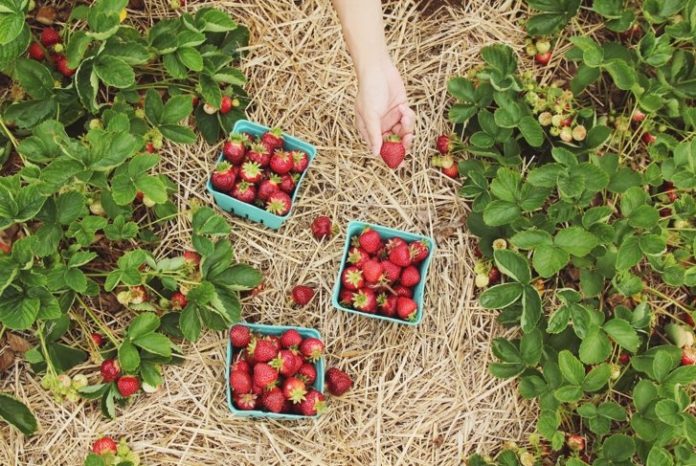
“Gardening is not a rational act.”—Margaret Atwood
This land is strewn with the innards and skins of those who did not survive. I would weep, but for the fact of knowing that many more endured and lie in a metal colander in my kitchen sink. What does one do with 500 cherry tomatoes?
Gardening is so much work. The tilling, the fertilizing, the seeding. My feelings toward gardening mimic the Grinch’s Christmas sentiment, “Noise, noise, noise, NOISE!”
That is why I outsource my farming. And I am not alone. In Canada, more than 2 million metric tonnes of field vegetables find their way from farmers to retailers each year.
“There’s a reason we have tractors and guys working 50 acres of land,” says Loren Taves, owner of Taves Family Farms in Abbotsford, BC. “I think people would be surprised to learn about how fragile bringing a perfect food product to the market actually is and the complexity of how hard [farmers] try to mitigate risks.”
A passion for the earth
Taves’ family has been farming for 40 years. While my relationship with gardening is an annual six-week commitment, after which we are both thrilled to amicably part ways, Taves—and thousands of farmers like him—are fuelled by their passion for the earth, and the process. His appreciation of homegrown produce was seeded at a young age.
“We would have a dinner in the middle of August, and everything on the table, we grew. There was a sense of pride in that. Everything we ate came from my blood, sweat, and tears.”
I may not have a talent for the agricultural arts, but I do talk to my own children about healthy eating and wholesome food. They are part of a generation that is growing up (with the help of water, just enough sunshine … and pizza) already understanding terms such as “buy local” and “organic.” It’s important for younger consumers to understand the word “apple” doesn’t only refer to smartphones.
Increasing education and awareness
“I certainly think there always needs to be more education. I think this past year, especially with COVID-19, and even the year before, with so many food recalls and outbreaks, that people are beginning to feel they need to look into it a lot more. But I think people are becoming a lot more aware,” says Ann Higgs, general manager at Atlantic Grown Organic, the wholesale branch of the Schurman Family Farm on Prince Edward Island.
Higgs emphasizes the importance of understanding not only where your food comes from but also how often our produce is ping-ponged across North America.
“They hear that things come from California. They think that it’s oftentimes a direct market, that it comes straight from California to PEI. In fact, that produce is exchanged at multiple locations back and forth throughout the US before it ends up in Canada, and then again in Canada before it reaches its final home.”
Priority = buy local
Taves and Higgs agree that the priority for all consumers should be to buy local. Not only is it a more environmentally sound choice, but it also keeps dollars within local communities. Taves says that when he sells to neighbourhood consumers, he can then, for example, “go into town to get my vehicle fixed.” As he explains, “Because <you> spend money here, I can spend money in the community. So, it rolls around and around. That’s a good thing.”
Many retail customers gravitate to organic foods as a way of investing in a healthier planet. In Canada, the organic food market is a $5 billion dollar industry. The Schurman Family Farm is entirely organic, although Higgs emphasizes that they regularly partner with other farmers who do not carry that certification.
Quality, proximity, and trust
For Higgs, quality and proximity trump labels. “We only buy from farmers we trust and that we know have the same core morals; that’s really what we’re looking for. So even if it’s not organic, we know it’s still grown in a sustainable, healthy, beneficial way.”
Taves echoes that sentiment. His business does not carry the organic certification, and that is by choice. “With that certification comes a very high cost, and a lot more risk. You usually pay about 30 percent more for organic. Quite often there is a lot more waste in organics, because you couldn’t quite keep out the bugs, or something else happens. You end up watching your crop wither away.”
Taves and Higgs encourage consumers to feel comfortable with their choices, regardless of the label. They would rather that effort be spent asking your grocer if they carry local foods, or even better, shopping at your local farmers’ market. That is the best way to encourage a green, healthy economy.
For anyone looking for local crushed tomatoes, you’ll find me in my backyard, cleaning my boots.
Understanding farm to table
How to encourage local farming and a healthy environment:
- Buy from your community farmers’ market.
- Ask your grocer for local produce.
- Grow what you can manage in your backyard or on your balcony.
- Become part of a community garden.
- Find farms with home delivery in your neighbourhood.



